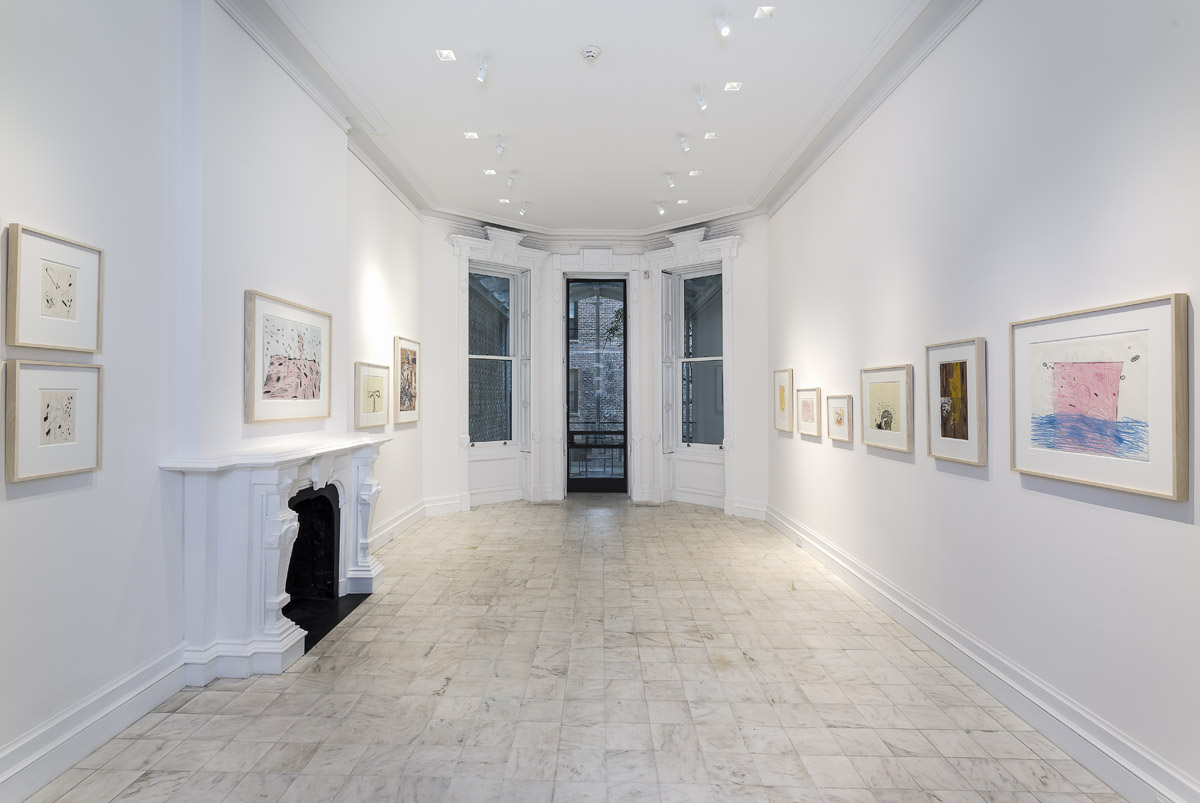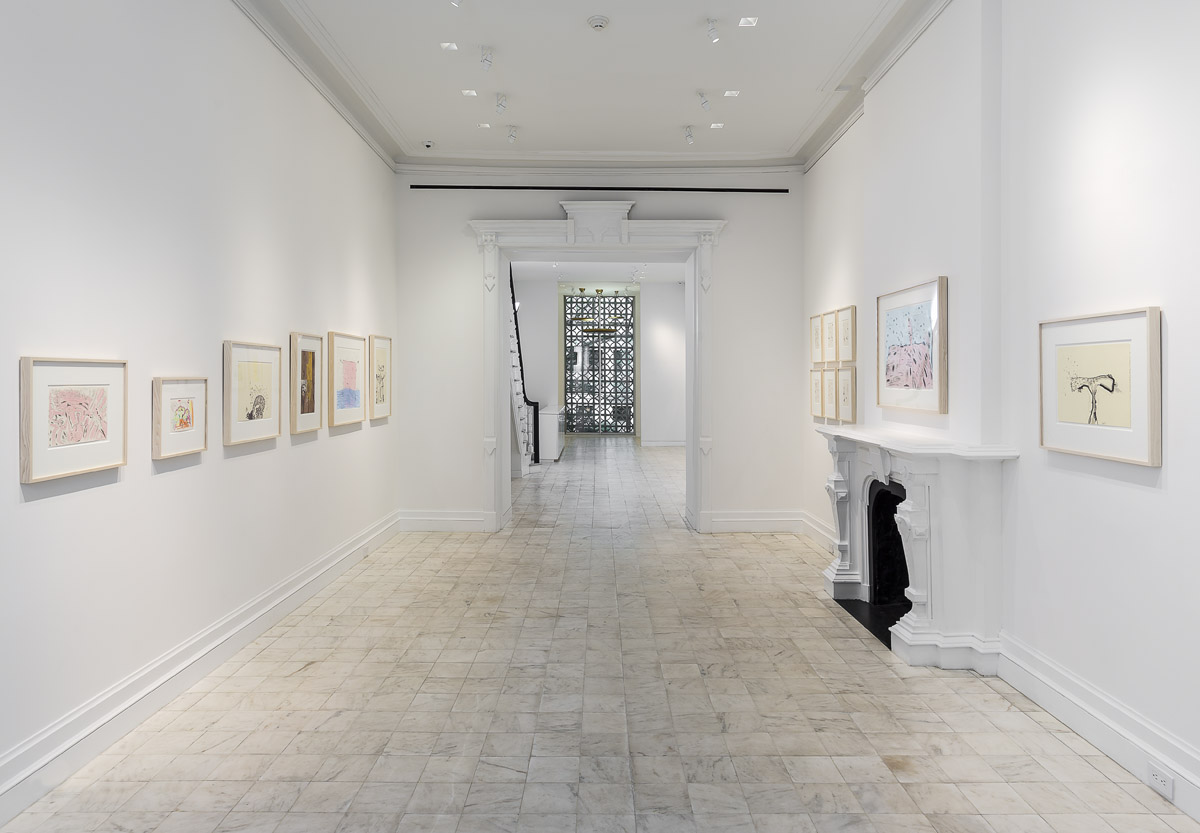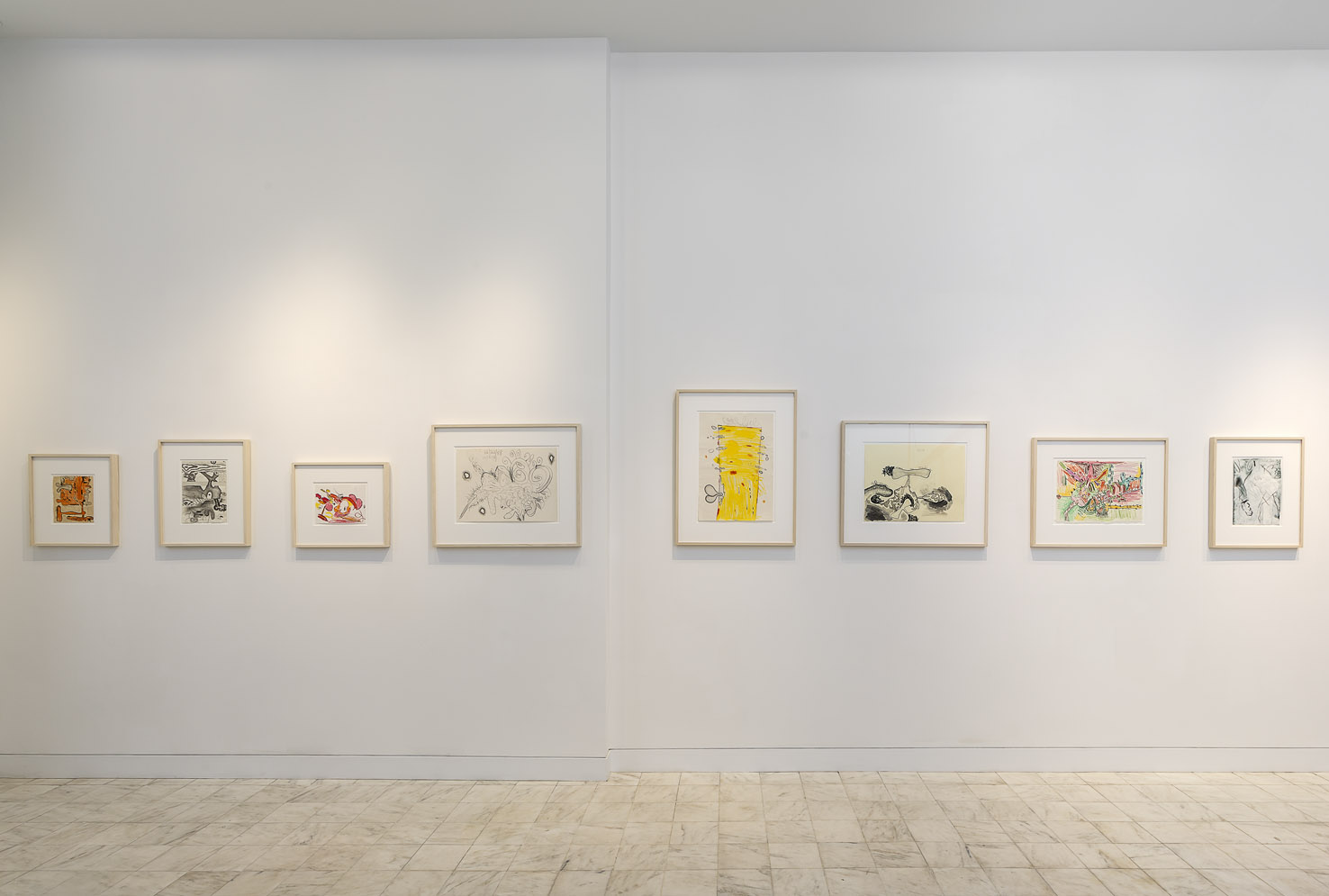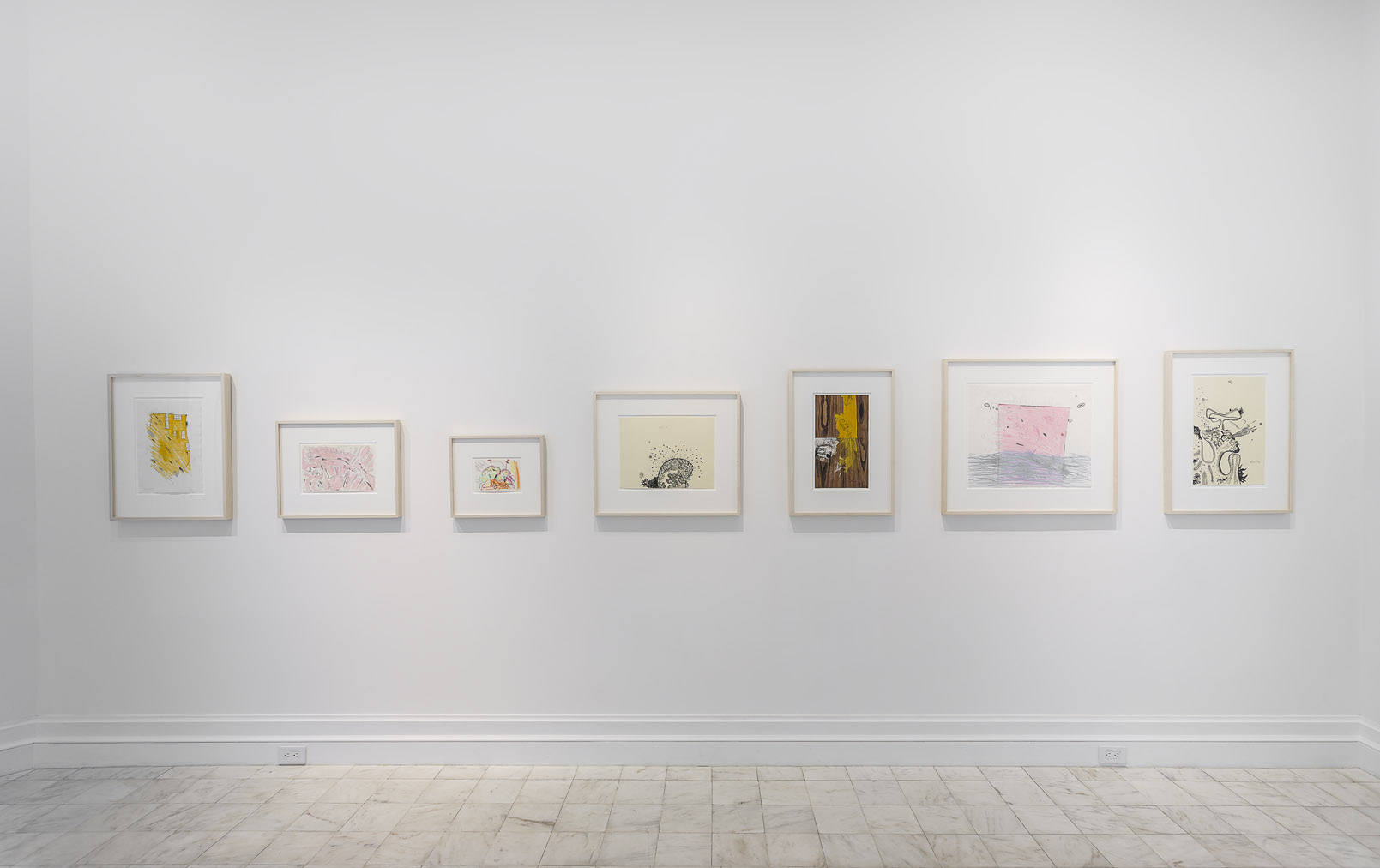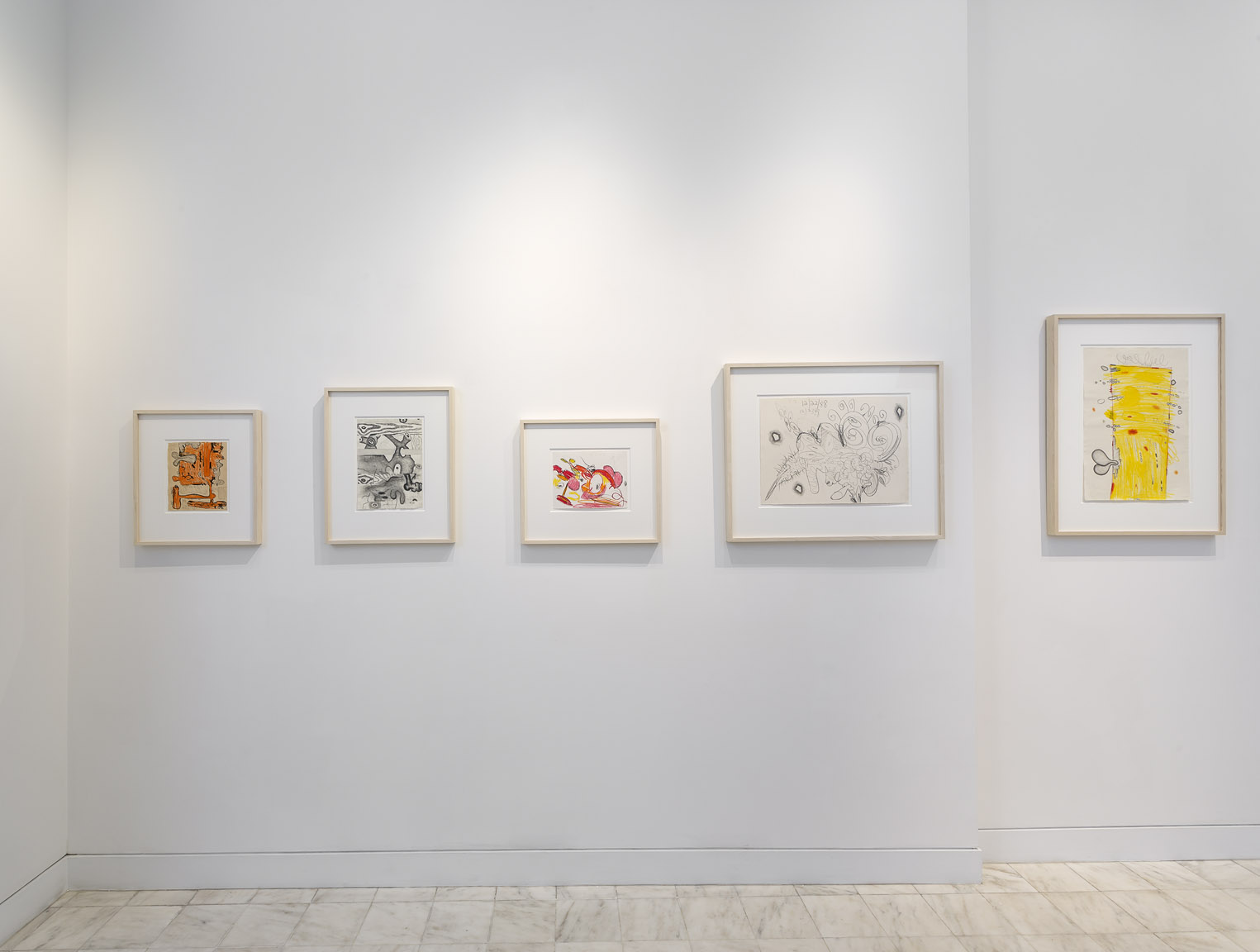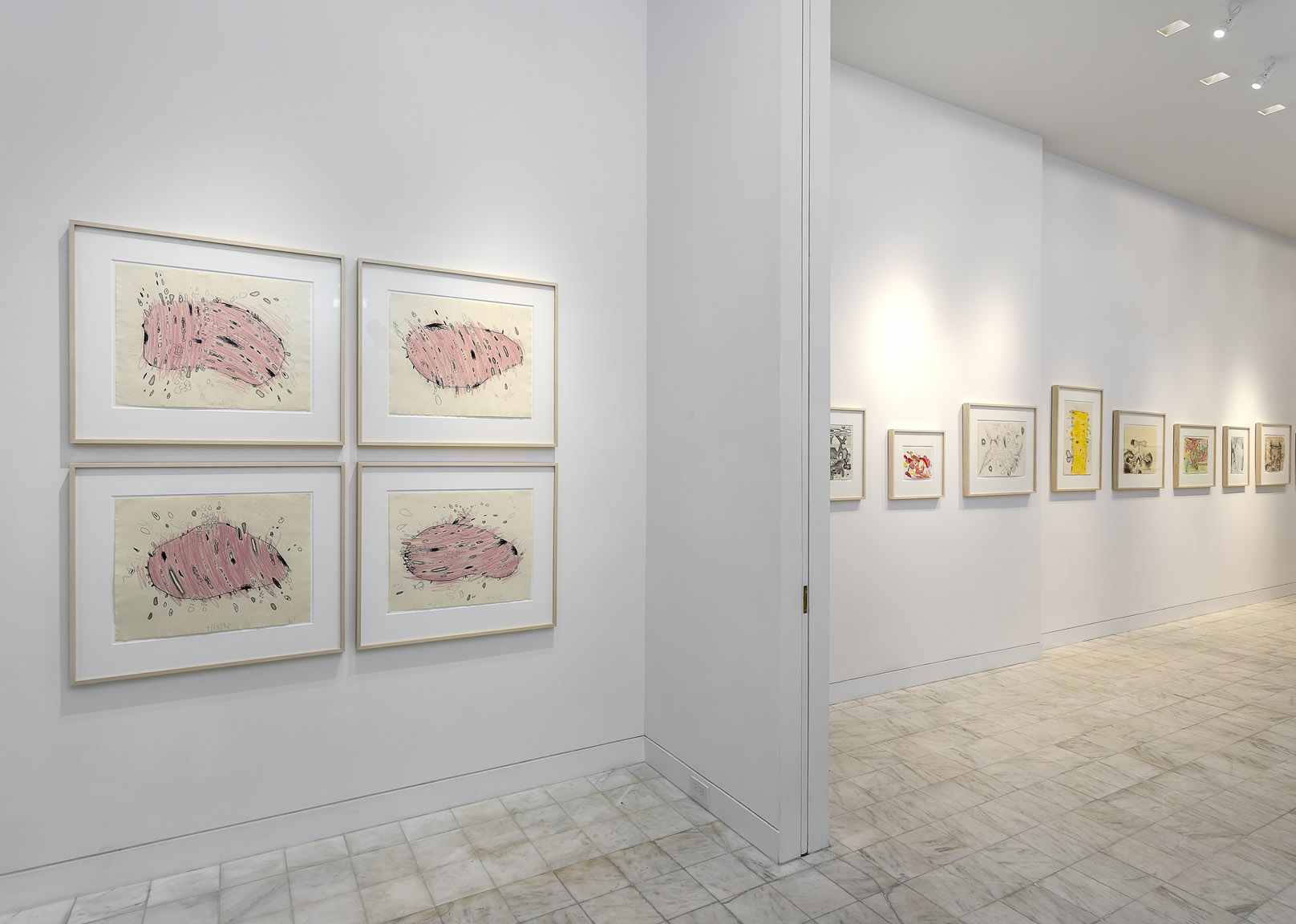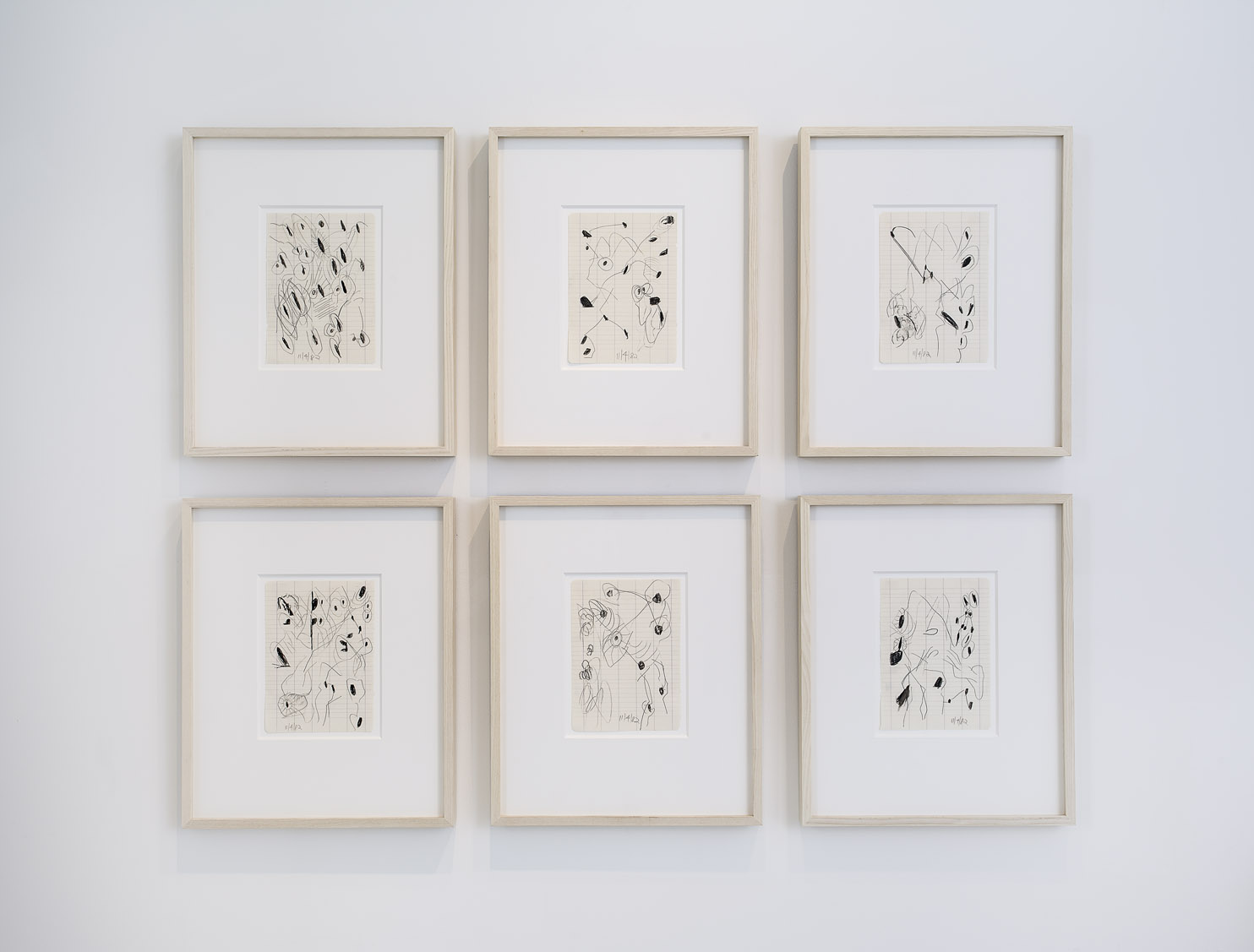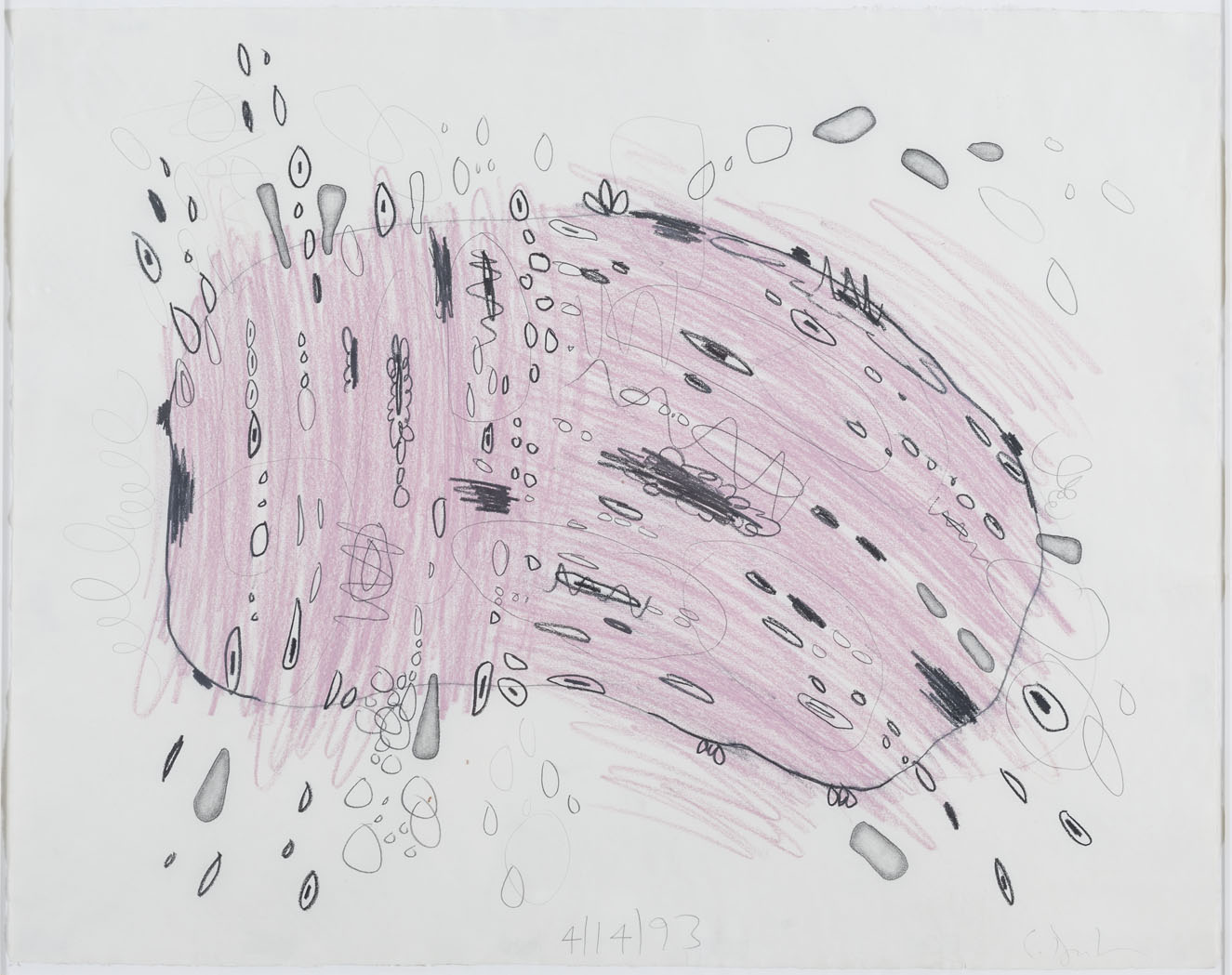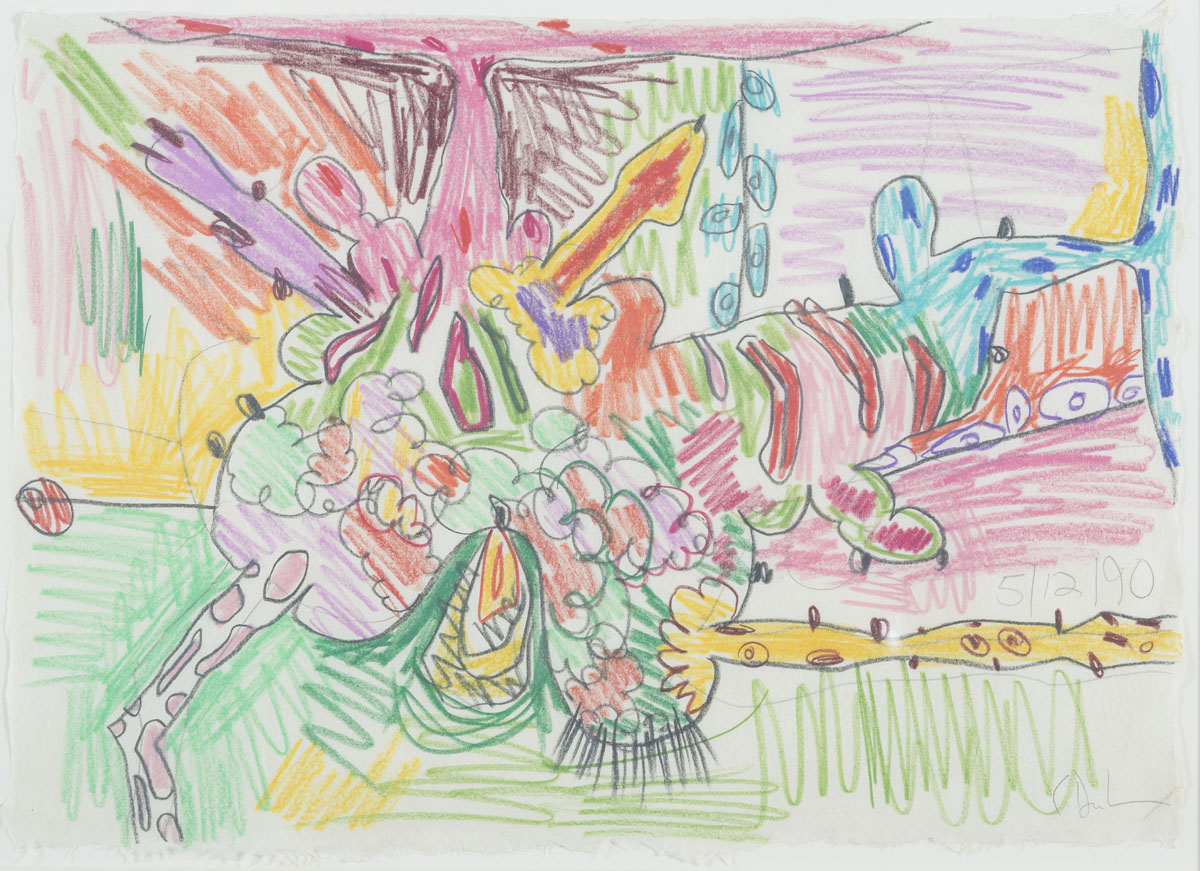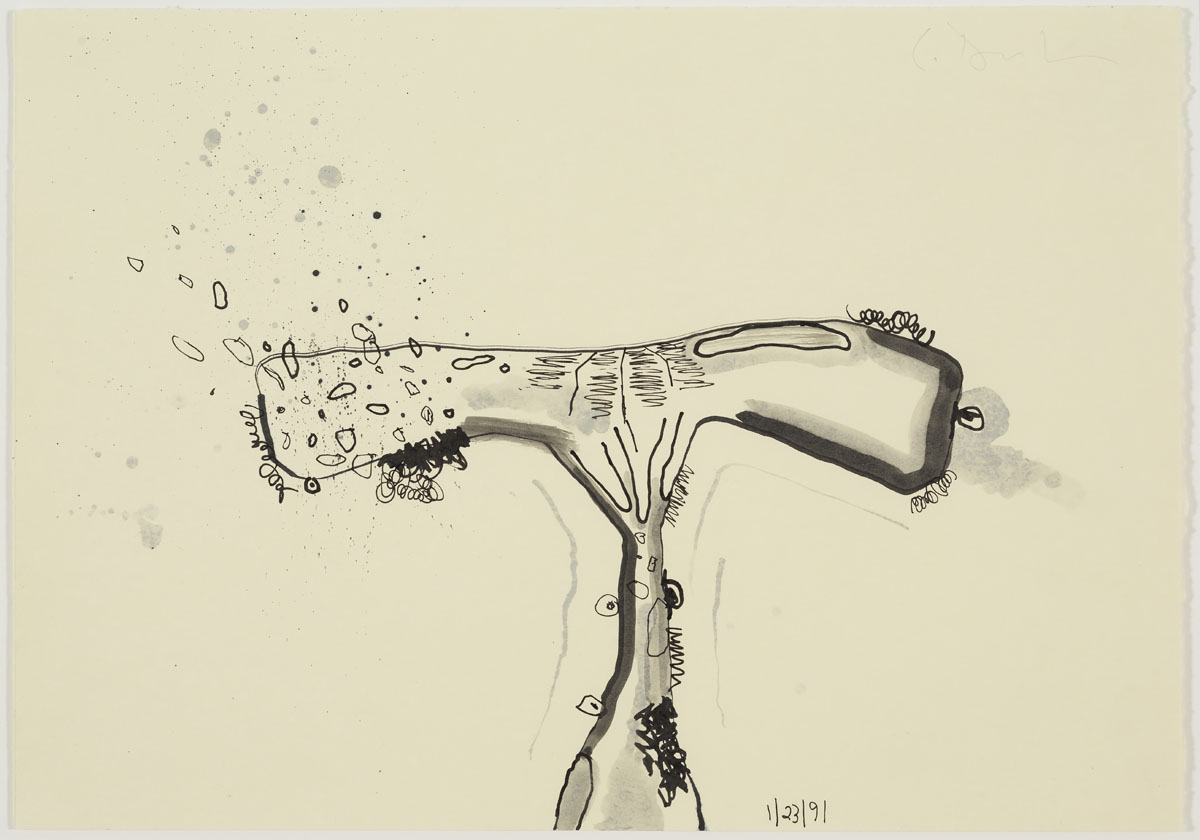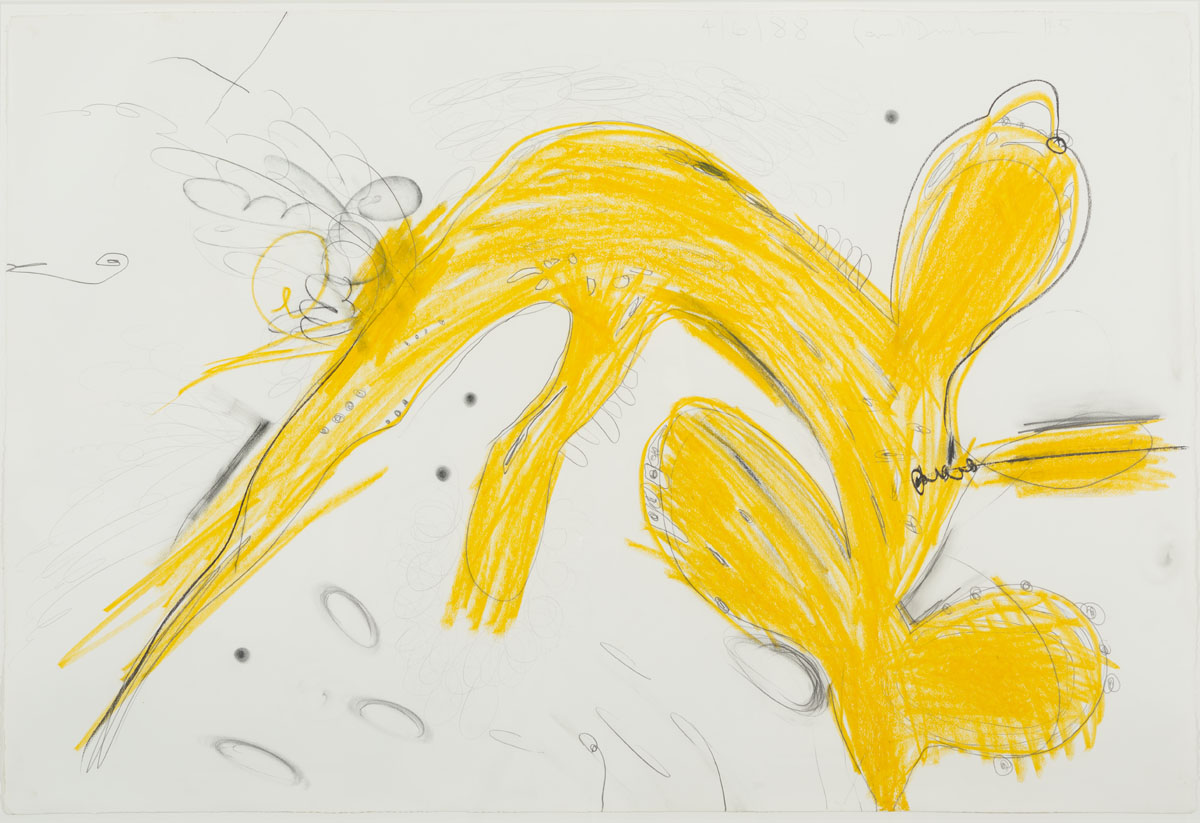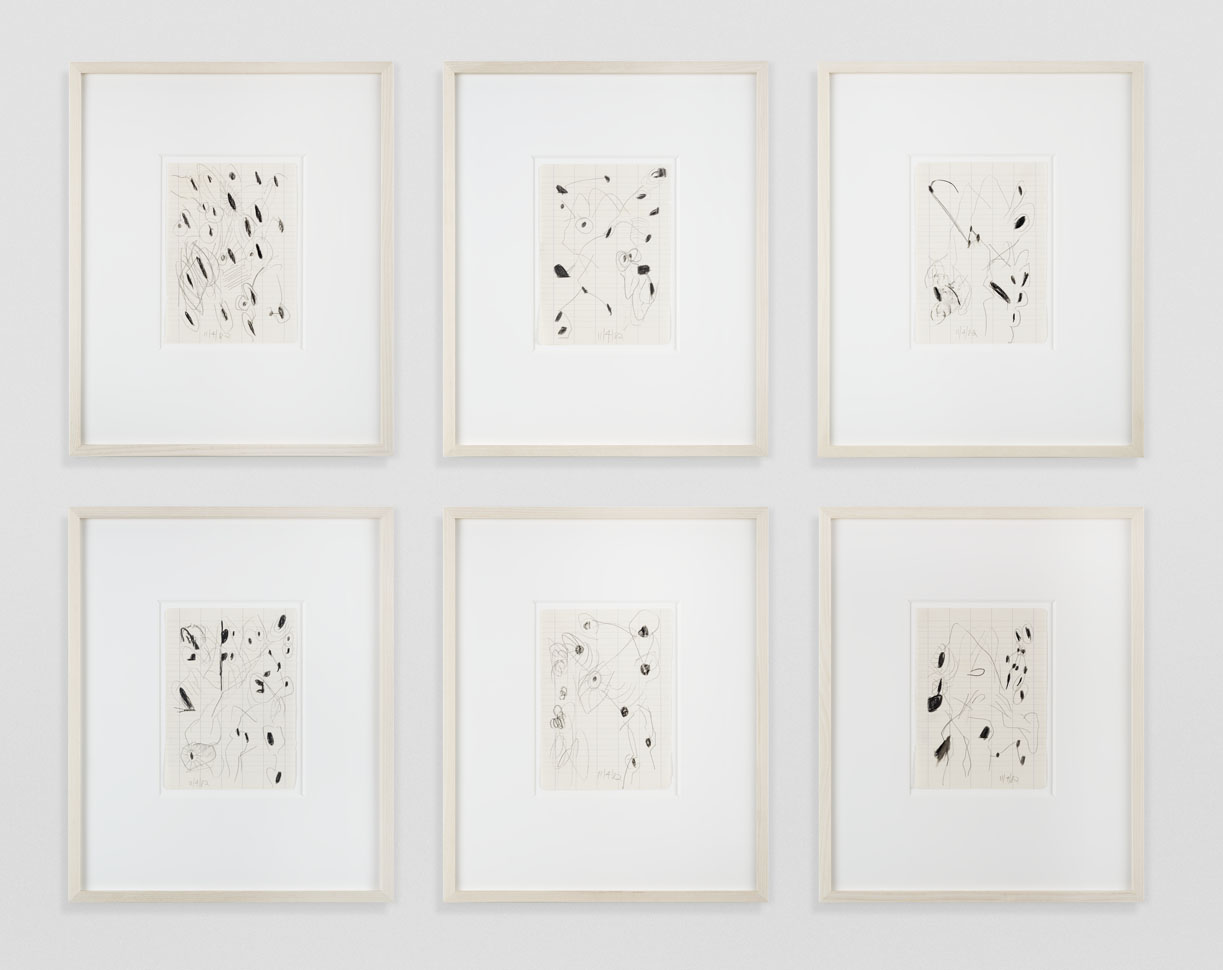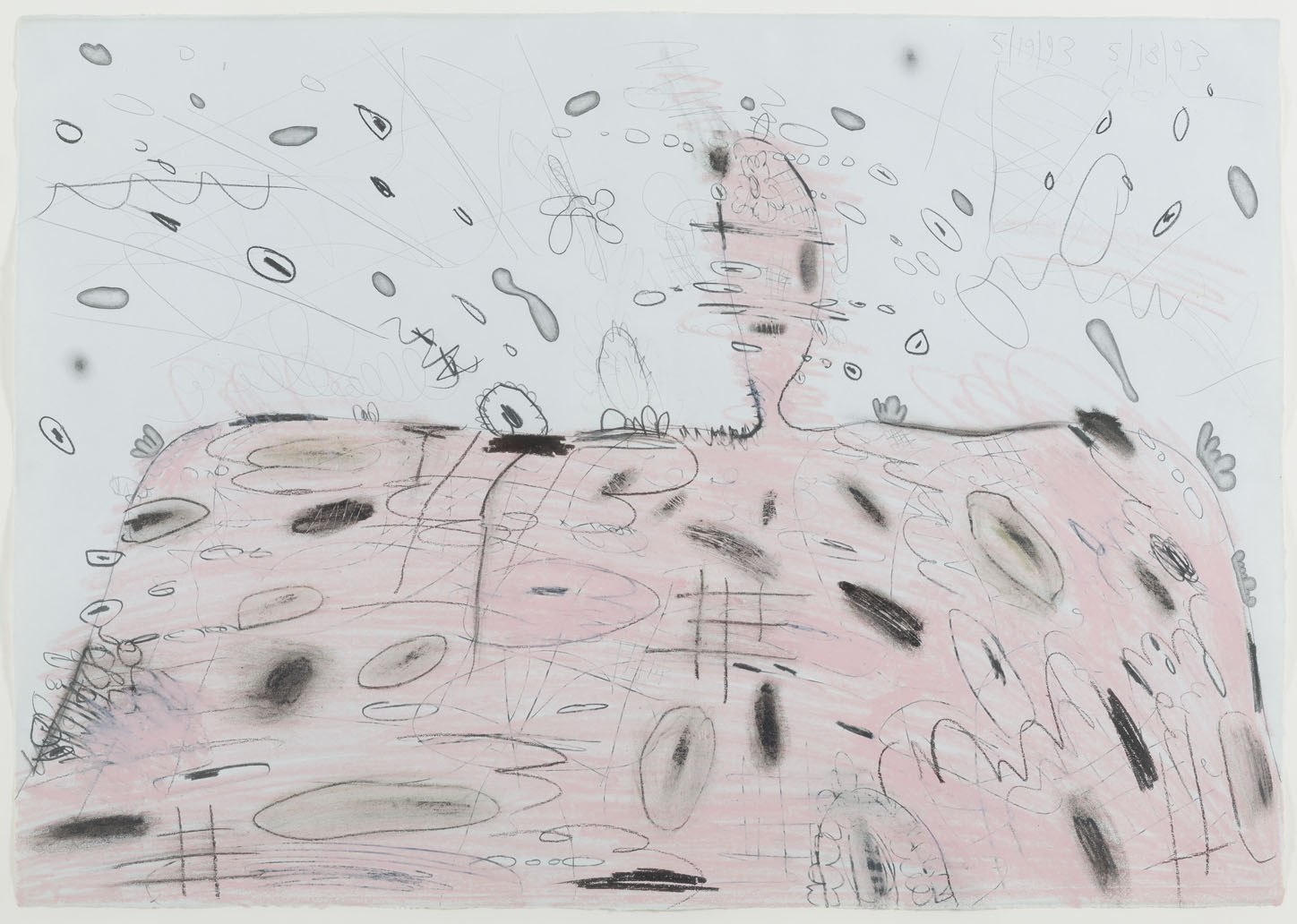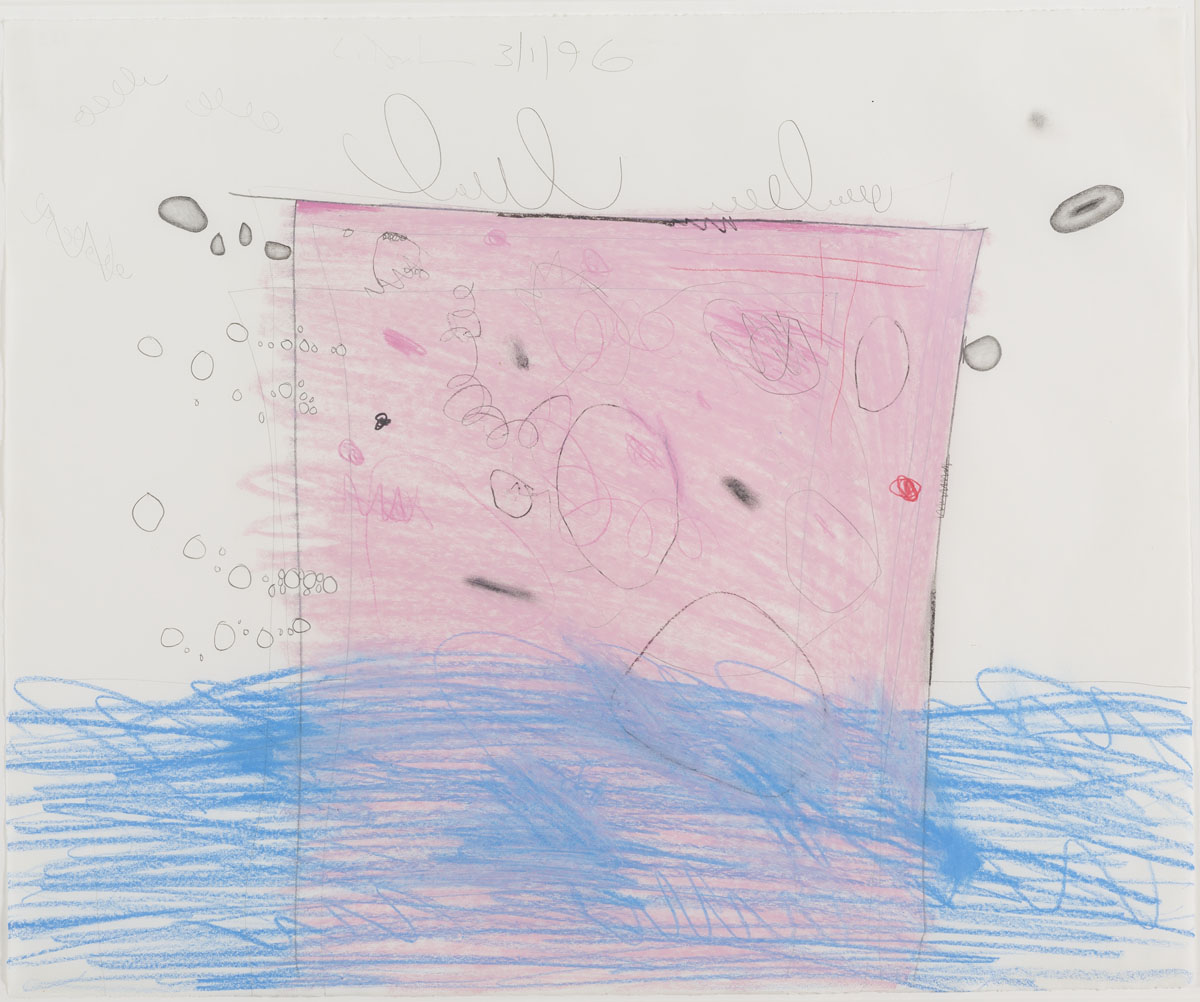1 of 18
About the Installation
Gladstone 64 is pleased to announce an exhibition of early drawings by Carroll Dunham. Featuring a large group of drawings created between 1982 and 1996, the exhibition highlights a period of Dunham’s practice in which he explored the boundaries of, and possibilities within abstraction. Preceding the figurative painting for which Dunham is so well known, this body of work exemplifies Dunham’s fruitful period of gesture and abstraction. Demonstrating both the range and inventiveness of his drawing practice, Dunham experimented with drawing on paper, wood and papyrus, with charcoals, inks, wax crayon, casein paints, pencils and pastels.Throughout his career, Dunham has drawn no distinction between the acts of painting and drawing. As noted by the artist, the practices of drawing and painting run parallel: “The only material distinction between what I was calling paintings and what I was calling drawings,” he says, “is that my drawings were not mounted on panel.”
Treating drawing as a medium for experimentation, Dunham removed all traces of what he termed the “age of rectangles” from his drawings made between 1982 and 1984, eliminating linear progress and grids in favor of abstraction. Through biomorphic shapes, flourishes of graphite, black paint and white gesso, Dunham pursued a new aesthetic language of nonrepresentational forms derived from “information not available through logic.” In Untitled (3/15/84), for instance, one of his last works drawn on a wooden surface, Dunham extrapolated shape from the veneer of the wood, using the curves of the grain to determine composition, tracing a path in black until a knot explodes into a burst of white paint.
The mid-to-late 1980s brought new transformations succeeding a series of surface experiments he conducted while working with multiple types of paper. Two examples on view come from the seminal 1988 series, Nine Drawings. In these works, Dunham focuses on a single colored object that seems to hover on the expansive space of the white page. Exuberant forms executed in thick yellow, black and orange crayon are tempered by delicate pencil strokes. The distinctive gestures act as both form and subject. Dunham’s application of crayon to the page differs with visible use of pressure—gestures of what appear to be the dense marks of the artist digging into the page are juxtaposed with evenly applied ink lines swirling with the same velocity as crosshatched pencil lines.
Works from 1988 and 1989 further explore the amorphous central shape, highlighting fresh discoveries in the use of positive and negative space. At times Dunham’s marks arrive at semi-definable shapes, yet just as often are delivered as marks in space. Untitled (5/14/89) features an amorphous yet puzzle-like form, outlined in pencil with striated contours filled with swathes of pink. Sketched outlines reveal hints of cartoon eyes, teeth and genitalia while oblong plateaus, dense foliage-like curlicues and craters recall otherworldly topographies.
A suite of drawings from 1990 collapses the space between shape and background. In Untitled (5/12/90), contours are carefully delineated, shifting the shape further into the realm of the figurative, while limb-like forms jut out of a landscape dotted with clumps of hair, leopard spots, genitalia, and octopus-like suction cups. Drawings through 1996, notably, Pink Mound with Eruption (5/18/93, 5/19/93), exhibit further refinement and expansion into figurative detail with lively strokes of animated color. Motifs emerge and protrude from the central shape while still maintaining an unnamable quality. Dexterously moving between the representational and the non-representational, Dunham’s “pink mounds” read as planetoids, colored in quick blush-toned gestures bringing to mind a glimpse into a particle accelerator. In these animated, biomorphic blurs of color, the viewer can begin to see the fertile ground from which Dunham’s later representational works spring.
A forthcoming catalogue entitled, Carroll Dunham: Drawings 1982-96, will accompany the exhibition.
Carroll Dunham was born in 1949 and lives and works in New York and Connecticut. Dunham’s work has been the subject of numerous solo exhibitions at international institutions including Museum Ludwig, Cologne; Millesgården, Stockholm; Drammens Museum, Drammen, Norway; a mid-career retrospective was held at the New Museum of Contemporary Art, New York. Dunham has also been included in notable group exhibitions including multiple Whitney Biennials and SITE Santa Fe; and at institutions including Musée d’art moderne et contemporain, Geneva; the Museum of Modern Art, New York; Museu Picasso, Barcelona; The Institute of Contemporary Art, Boston.

